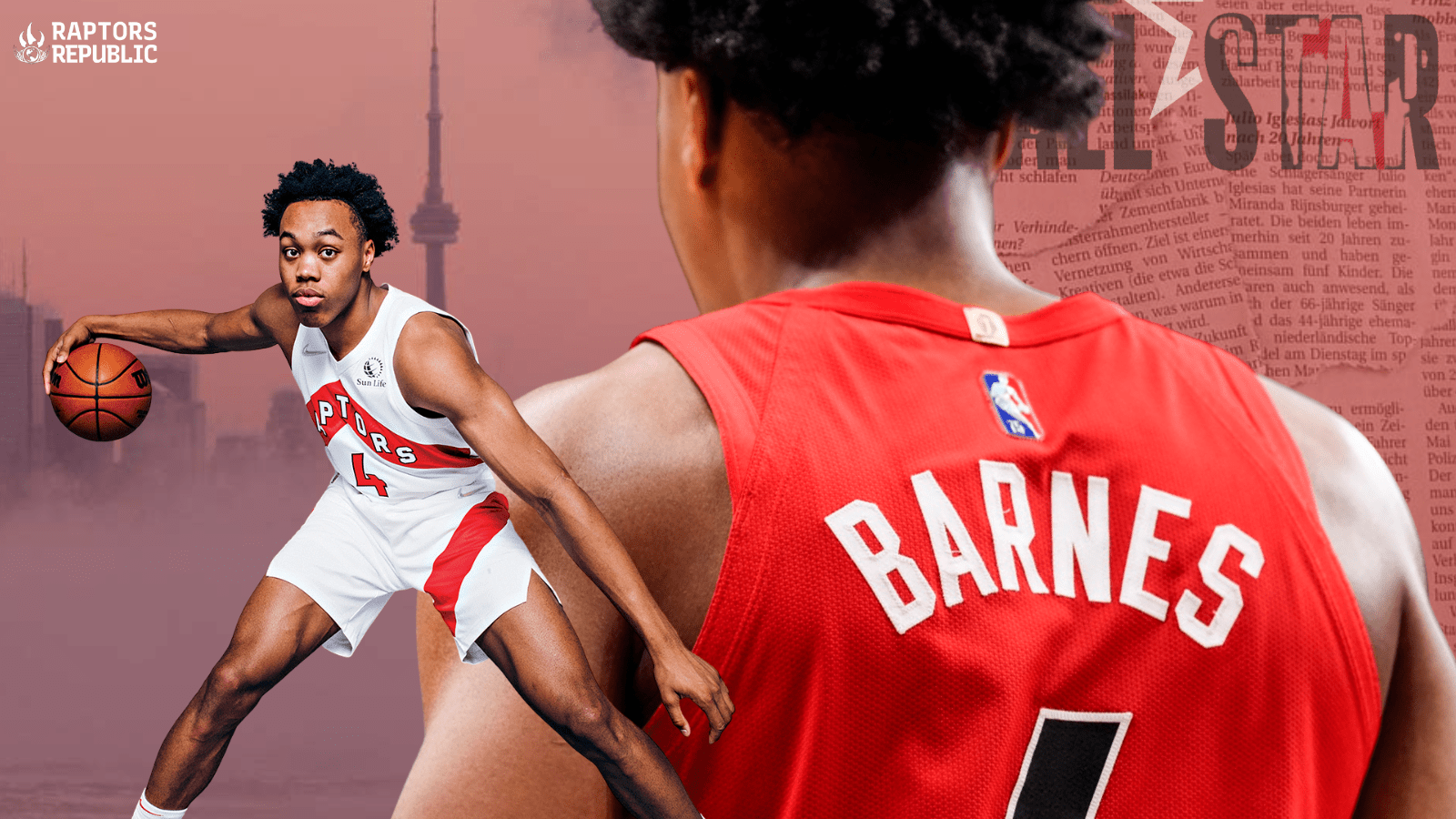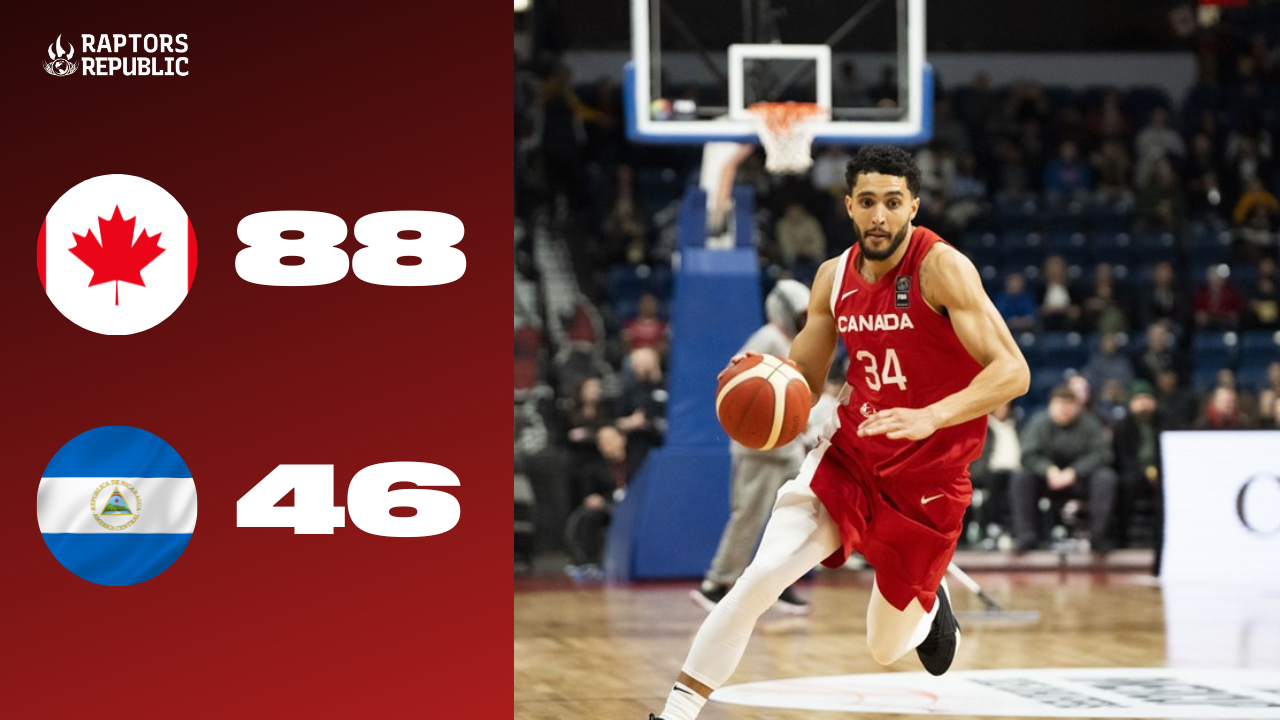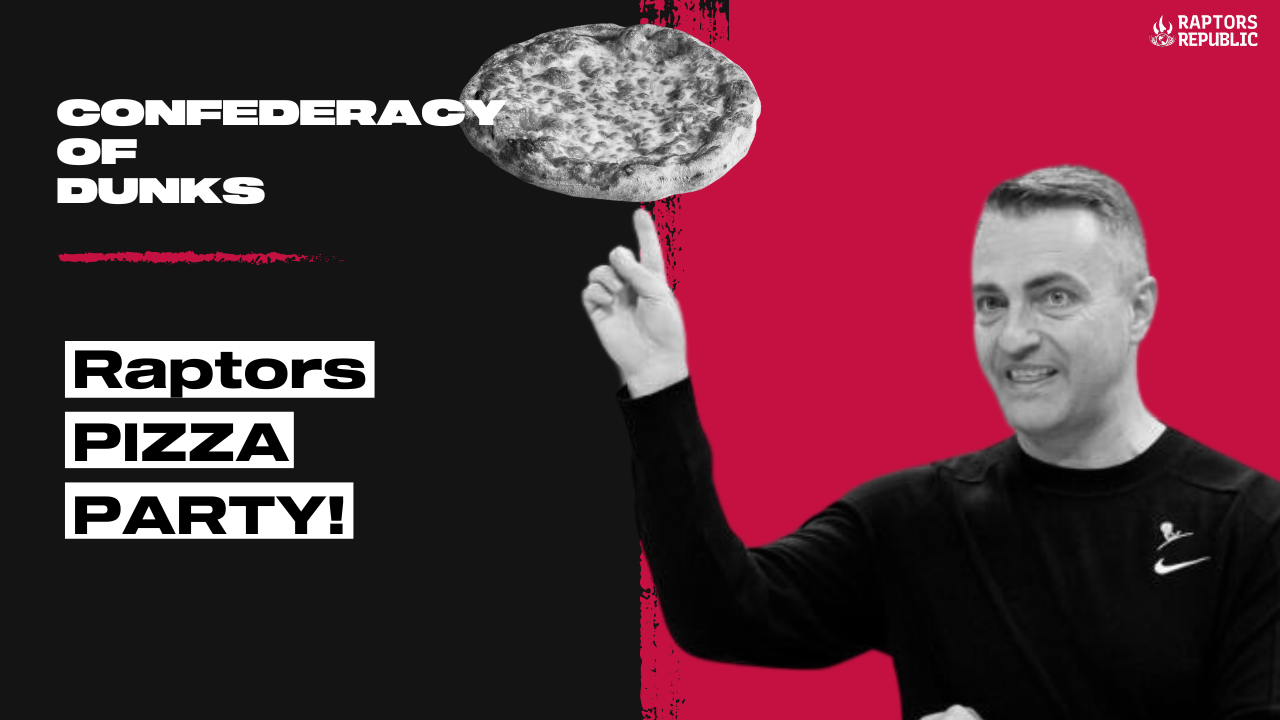The Toronto Raptors could not earn a pizza party against the Boston Celtics on Nov. 11. (I don’t think the promise for an upscale dinner — which was his original promise — from Darko Rajakovic had even been made yet.) They could not earn one against the Cleveland Cavaliers or the Sacramento Kings. Nor the Cavaliers again, just a few weeks ago. It has not been a season with many opportunities for pizza. Until now.
Scottie Barnes led the Raptors to a picturesque, fairy-tale win over the Indiana Pacers and Pascal Siakam. He was the best player in the game, with 21 points, 12 rebounds, 12 assists, and 5 blocks besides. (He also left a lot on the rim; he could have had 30 with a few friendlier rolls.) He also tied Siakam for second in franchise history for most triple doubles with the game. And, most importantly, he won the Raptors a pizza party.
It was a tidy night’s work for Toronto’s keystone player.
But how has Barnes changed his game since becoming Toronto’s unquestioned — and only — leader? Despite some missteps as a leader, such as seeming to not want the ball late against the Oklahoma City Thunder, or walking off the court early against the San Antonio Spurs, Barnes has course corrected since then. He has been vocal on and off the court, shouting out rotations, cheering on his teammates, and standing while on the bench for long stretches. Mistakes happen for all 22-year-olds, and his response to them has been terrific. And the more important aspect of his leadership comes on the court. Through his play.
Much that has happened since Barnes became the team’s only star has been fairly predictable. He has initiated more regularly for the team since Jan. 1 — as shown by a jump in his pick-and-roll, initiation, and post-up frequency. And he has been Toronto’s second-side attacker less regularly — as shown by a drop in his handoff and drive-against-closeout frequency.
But there has also been some surprising elements in those results. Much has remained the same in terms of efficiency. In fact, Toronto is scoring virtually identically in every different type of Barnes attack except for one: pick and rolls. In those, Barnes was solid before the trade, with Toronto averaging 0.96 points per chance when Barnes initiates a pick and roll. But he has been exceptional since the trade, with Toronto averaging 1.13 points per chance since the trade. That’s a top-10 rate among high-volume initiators.
What changed?
On one hand, who Barnes has run pick and roll with has shifted somewhat. It’s of course a dance that requires two (at least). And whereas Barnes was only average running picks before the trade with Jakob Poeltl, those have exploded in efficiency. They have been a top-10 duo in efficiency since Jan. 1. We’ll get to explaining that in a moment. But Barnes has also been terrific with guard-screening options, including Immanuel Quickley, Bruce Brown, and Gradey Dick. The points per chance with Barnes handling and one of those three screening has been almost 1.4. Which … damn. The Raptors weren’t running many of those inverted picks for Barnes with Siakam on the team, as Siakam was so established in such plays. But Barnes has proven to be at least equally capable since becoming Toronto’s resident inverted-pick handler.
All three of those guard screeners can of course ghost the screen and fly into a jumper or drive. And all can get solid contact on their screens before popping for a jumper or drive. But the real meat of those plays has actually been Barnes’ own scoring, attacking switches with bully drives, or jumpers, or just using defenders’ momentum leaning towards the shooter against them by rejecting and getting to the rim.
Those inverted picks are one of Toronto’s sharpest knives. What’s old is new again — what was Siakam and Fred VanVleet has now become Barnes and Quickley. The result has been pretty much the same: money in the bank. And with so much more passing and motion on the roster alongside the players actually involved in the inverted pick and roll, the Raptors’ offense is better positioned to collect interest on that money. (As it were.)
But the meat of Barnes’ success as a handler has been his picks with Poeltl improving from pretty mediocre to godly. The biggest change hasn’t been in the play of those two, but instead in the amount of shooting around the pair. Before the trade, Toronto surrounded Barnes and Poeltl largely with Siakam and Dennis Schroder. That’s two players whose defenders sink deep into the lane to tag, stunt, and otherwise sow havoc. Now Toronto has Quickley, Gary Trent jr., and RJ Barrett surrounding the Barnes-Poeltl picks, which gives them much more room in which to work.
But within that space, Barnes and Poeltl have developed, as well. Barnes has been passing significantly more in such situations than he was in 2023, and a higher rate of his passes have resulted in assists, too. There has been a higher rate of double picks, Spain screens, and other slightly more advanced situations in which Barnes is making reads. And most of all, Barnes has been brilliant at finding passing windows to Poeltl on the roll.
Behind the success of Barnes as an initiator, the Raptors have a real vision of success going forward. In fact, since Jan. 1 Toronto’s starting lineup with Barnes at the helm has been a top-10 unit leaguewide when it comes to net rating. That is something upon which the Raptors can build. And within that framework, there is plenty that is still improving; Quickley is still growing as a point guard, Barrett as a second-side attacker. Improved micro-skills, like skip passing or veer drives, from Quickley will benefit everyone. The Raptors are actively figuring out what they want, and from whom, at shooting guard. There is a framework of good. The Raptors can build it to be great.
On top of the pick and rolls, or folded into it, has been increased aggression from Barnes overall. He has driven more frequently and better, getting deeper into the paint.
There is plenty that Barnes needs to add still. He remains not the best isolation scorer against his primary defender, and Toronto really lacks that. It’s important for closing games. But he wasn’t a great isolation scorer before the trades, as Siakam took the brunt of the load there. Barnes has a long way to go to get to Siakam’s level in pure isolation scoring, and becoming a killer midrange scorer will go a long way there. His long midrange numbers are better this season than ever, but he doesn’t have the DeMar DeRozan spins, fakes, footwork, fades, and foul-baiting that are required for isolation success in the midrange. And Barnes’ handle isn’t at the level where it can get him to the rim consistently against a set defense. All that will need to grow.
But there’s already been so much growing. Barnes has been fantastic as the team’s primary initiator, all things considered. It was not certain he would become this before this season, and it may have seemed likely after his hot start, but it still wasn’t a certainty without Siakam and OG Anunoby on the team. If Barnes’ numbers remain the same as a creator going into future seasons, the Raptors will have found a star who can succeed in team play (read: not isolation) with the ball in his hands, from a standstill, without co-stars on the floor. That’s about as valuable as it gets. Learning that lesson from this season is another reason that 2023-24 may be full of losing, but it is not lost.
On a personal note, for those who read all the way to the end, this is my last piece for a little bit due to baby-having reasons. Have a good time watching the Raptors everyone! They’re fun these days. Be kind to each other. I’ll be back soon.



